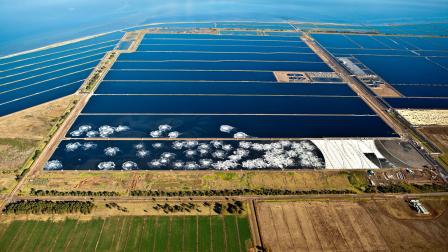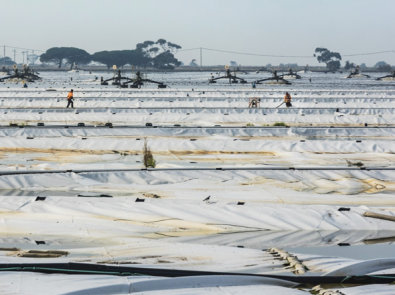Did you know sewage is much more than a waste product? Biogas is a by-product of the sewage treatment process, and helps generate renewable energy.
What is biogas?
When sewage breaks down in an anaerobic (oxygen-free) environment, it releases biogas made up of mostly methane and carbon dioxide.
Capturing biogas and converting it into energy is beneficial for the environmental because it:
- turns a by-product of the sewage treatment process into a useful resource
- reduces direct greenhouse gas emissions created by the sewage treatment process
- produces renewable electricity.
How we use biogas
We capture biogas at the Western Treatment Plant and the Eastern Treatment Plant.
Biogas is captured in anaerobic digesters and from covered anaerobic treatment lagoons. The gases are then transferred to on-site power stations, where they are combusted. This releases energy that spins a turbine connected to a power generator – converting the energy in biogas into electricity.
Western Treatment Plant
The Western Treatment Plant generates over 86,000 megawatt hours of renewable electricity every year, equal to about 8,600 households’ worth (based on average of 10 MWh per household).
Biogas projects
Second power station at the Western Treatment Plant
We’ve built a second power station (power station B) at our Western Treatment Plant to enable us to turn most of the biogas the site produces into electricity.
The exact amount produced depends on the time of year and volume of incoming sewage, with summer being the peak time for methane production.
Power Station B has been operating since 2022. Electricity generation has increased from 70,000MWh/annum to over 86,000MWh/annum.
We’re taking action on climate change, pledging to halve our net emissions by 2025 and reduce them to net zero by 2030. We also commit to sourcing 100% of our electricity from renewables by the end of 2025.
You may also like...
Western Treatment Plant
Explore the historic sewage treatment plant in Werribee, also an internationally-recognised bird habitat.

Eastern Treatment Plant
Learn how the treatment plant uses innovative processes to turn sewage into Class A recycled water.





